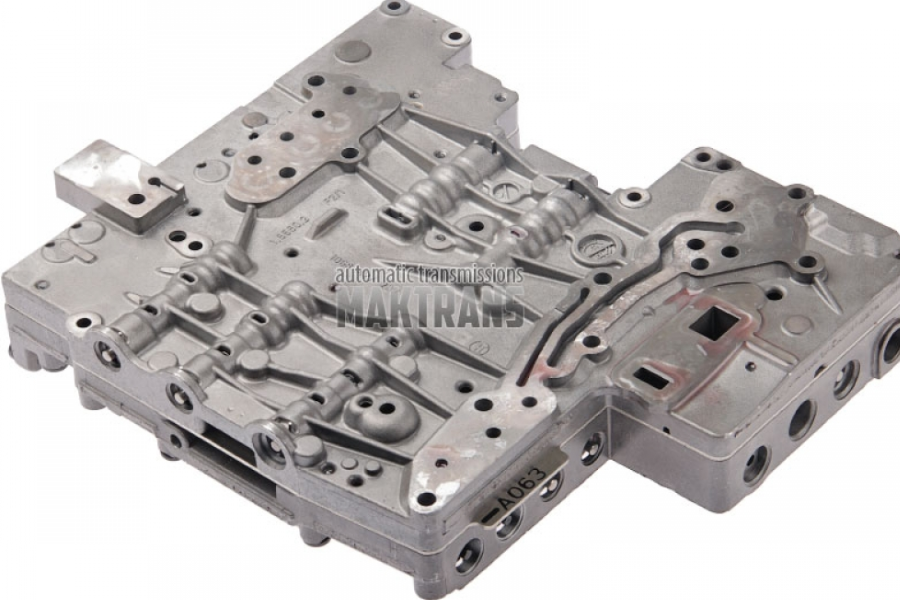The ZF 6HP Generation 2 transmission is widely regarded for its performance and reliability in many modern vehicles. A critical aspect of this transmission’s functionality is its solenoids—small but essential components that regulate the transmission’s hydraulic system, ensuring smooth gear shifts and overall efficiency. If you’re seeking a deeper understanding of how these solenoids work or need help troubleshooting, a ZF 6HP Generation 2 solenoid diagram can be an invaluable resource. In this guide, we’ll explore the different types of solenoids used, how to interpret their diagrams, and tips for maintenance and troubleshooting.
Types of Solenoids in the ZF 6HP Generation 2 Transmission

The ZF 6HP Generation 2 transmission incorporates various solenoids, each serving a specific purpose in controlling fluid flow https://glamourcrunch.com/ and managing key functions within the transmission system.
- Pressure Control Solenoids
These solenoids regulate hydraulic pressure to ensure seamless gear shifting. They respond to changes in engine speed and load, adjusting the pressure for optimal transmission performance. - Shift Solenoids
Shift solenoids control the engagement of clutches and brakes, allowing for smooth and precise gear changes. Proper functioning of these solenoids is essential for comfortable driving. - Torque Converter Lock-up Solenoids
These solenoids enhance fuel efficiency, especially during highway driving. By locking the torque converter at specific speeds, they reduce strain on the engine and improve overall performance.
Understanding the purpose of each solenoid can greatly aid in diagnosing issues and performing maintenance tasks.
How to Read a ZF 6HP Generation 2 Solenoid Diagram
Reading a solenoid diagram for the ZF 6HP Generation 2 transmission may seem complicated, but with practice, it becomes more straightforward. Here’s how to approach it:
- Identify Key Components
The diagram will feature various solenoids, each labeled according to its function (e.g., “shift solenoid,” “pressure control solenoid”). Familiarizing yourself with these labels is the first step. - Trace Wiring Connections
Lines on the diagram represent electrical circuits, showing how power flows between components. Tracing these connections helps in diagnosing electrical issues that might affect solenoid performance. - Look for Color Coding and Symbols
Many solenoid diagrams use color coding or symbols to denote different electrical pathways or functions. Refer to the diagram’s legend to interpret these correctly.
By familiarizing yourself with these elements, you can effectively diagnose and repair transmission issues related to the solenoids.
Troubleshooting Common Solenoid Issues
When solenoids in the ZF 6HP Generation 2 transmission start to fail, there are several common symptoms to watch for:
- Delayed or Rough Shifting
If your vehicle is experiencing delayed gear shifts or rough transitions between gears, a malfunctioning solenoid may be the cause. This often indicates issues with the pressure control or shift solenoids. - Warning Lights
Transmission warning lights on the dashboard may indicate solenoid issues. These should not be ignored, as they could point to a larger problem within the transmission system. - Unusual Noises
Whining or grinding sounds coming from the transmission could signal problems with the solenoids or the hydraulic system they control.
Performing regular diagnostics using an OBD-II scanner can help you pinpoint solenoid-related errors and address them before they cause more serious damage.
Tips for Maintaining and Replacing ZF 6HP Generation 2 Solenoids
Proper maintenance is essential for extending the life of the solenoids in your ZF 6HP Generation 2 transmission. Here are a few tips to ensure optimal performance:
- Routine Inspections
Check solenoids regularly for signs of wear, corrosion, or leaks. Addressing small issues early can prevent larger, more expensive problems later on. - Use OEM Parts
When replacing solenoids, always use Original Equipment Manufacturer (OEM) parts. This ensures compatibility and reliability. - Clean Connections
Before installing new solenoids, clean the area around the connections to remove any debris that could interfere with performance. - Follow Torque Specifications
Be mindful of torque specifications when tightening solenoids during reassembly. Over-tightening can cause damage, while under-tightening may lead to fluid leaks. - Monitor After Replacement
After replacing a solenoid, closely monitor transmission behavior to ensure everything is functioning properly.
If you’re unsure about any maintenance procedures, it’s always best to consult a professional to avoid causing further damage.
Conclusion
The ZF 6HP Generation 2 transmission is a complex system that relies heavily on solenoids to ensure smooth and efficient operation. By understanding the role of each solenoid, reading and interpreting diagrams, and performing regular maintenance, you can extend the life of your transmission and improve your vehicle’s overall performance.
For those maintaining or repairing their own vehicles, resources like a ZF 6HP Generation 2 solenoid diagram PDF provide crucial insights into the inner workings of the transmission, helping to ensure that repairs are done correctly. Whether you’re a seasoned mechanic or a DIY enthusiast, understanding these solenoids can help keep your transmission running smoothly for years to come.
Frequently Asked Questions (FAQs)
- What does a ZF 6HP Generation 2 solenoid do?
Solenoids in this transmission control hydraulic fluid flow, enabling smooth gear shifts and overall transmission performance. - How can I troubleshoot solenoid issues?
Symptoms like delayed shifting, dashboard warning lights, and unusual noises often indicate solenoid problems. Using an ZF 6HP Generation 2 solenoid diagram PDFOBD-II scanner can help diagnose specific issues. - What should I do if my solenoids need replacement?
Use OEM parts, follow proper torque specifications, and monitor the transmission after replacing solenoids to ensure they are functioning correctly. - How often should I check my solenoids?
Regular inspections during routine vehicle maintenance are essential. Look for signs of wear, leaks, or corrosion. - Why is reading a solenoid diagram important?
Solenoid diagrams provide ZF 6HP Generation 2 solenoid diagram PDF insight into how electrical connections are arranged within the transmission, helping diagnose issues and guiding repairs.











